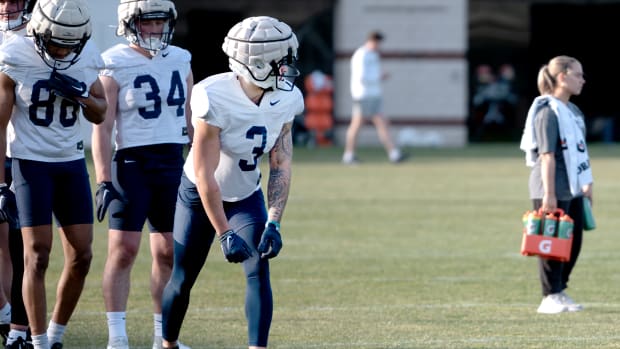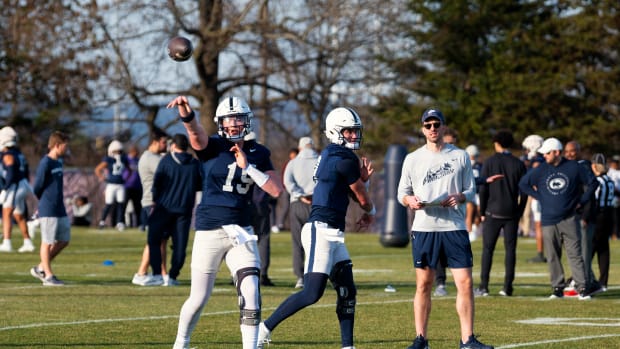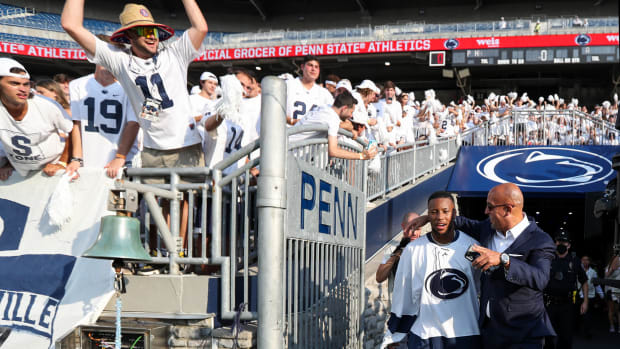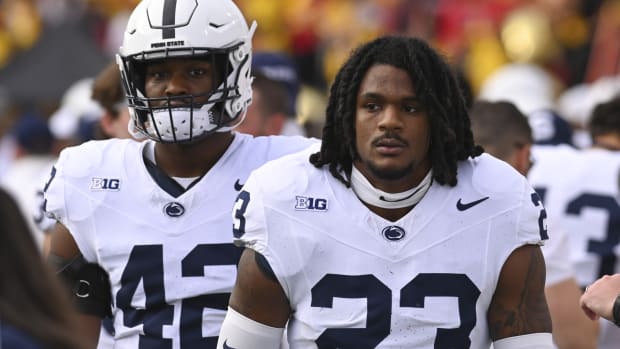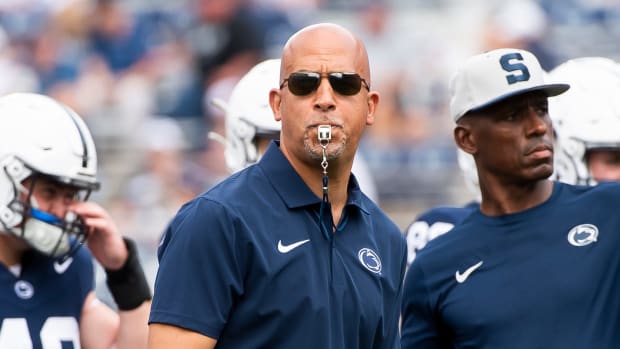Big Ten Decision Q&A With James Franklin, Part II
Penn State coach James Franklin covered plenty of ground during a recent media call, sounding frustrated yet hopeful, exasperated yet confident.
He discussed a range of topics, from winter football to recruiting to the Big Ten players and parents who spoke out in favor of a 2020 football season.
This is the second part of a Q&A with Franklin from that session. Check out Part I here.
Q: Do you think that the voices of the coaches in the Big Ten, the parents and especially the players were heard by the Big Ten leadership that made this decision?
FRANKLIN: I think they have now. I don’t know if they were heard clearly before the decision. I think that’s fair to say.
Q: Is that one of your greatest frustrations with this?
FRANKLIN: The way for me to make the best decisions for Penn State football is to hear my coaches' perspective, to hear my staff's perspective, to hear my players' perspective, to hear from my administration and, when appropriate, the parents. I wouldn't say it happens for decisions within the program, but major decisions it would be.
So I guess what I'm saying is, for me to make the best decisions for the organization and not have blind spots, then I need to hear from all those different groups when appropriate and when feasible. That puts me in the best position to make the best decision.
Q: Did you favor the Power 5 conferences being in unison on whether to play or not to play?
FRANKLIN: There's definitely a responsibility to get everybody into a room and have a conversation and put college athletics and put college football first. And try to exhaust that as much as you possibly can. Get all of the leaders of all the conferences in one room together and say, 'What can we do to make this thing work the best we can for everybody?'
And then if it can't work, at some point obviously the Big Ten has to do what's best for the Big Ten at the end of the day, and the ACC has to do what's best for the ACC and so on. But there needed to be an effort to try to do what's best for student-athletes and do what's best for college athletics and college football across the board first. That I think is very important.
Because once you start fracturing it, and one group is doing one thing and another group is doing another, then you get all the problems that we're dealing with now. And there may have come a point that you couldn’t do that. But that needed to be exhausted before making these decisions, in my mind. And now much that happened and how much that didn’t happen, I’m not sure.
Q: What responsibility does the athletic department have to the community that's trying to get through a tough time?
FRANKLIN: I will tell you this. As the head football coach at Penn State, I carry a weight with me, not just for my players and our coaches and our staff. I also carry the weight of the athletic department. I know that the success of Penn State impacts more than just Penn State football. That's 31 sports. I also know the impact it has on the community.
I feel ingrained in this community. I go on my little walks through town and I feel the weight of that. ... When I talk about the decisions we make, they're more than just playing the game of football. It's our players' passion and it's their dream to not only have an unbelievable college experience but, for some of them, to play in the NFL.
... Yes, in a perfect world, would you love to have games in Beaver Stadium this winter and be able to have fans there and be able to help the local economy? Yes, without a doubt, 100 percent. But based on all the information we have, I don't know how realistic that is right now.
Q: When you step back and look at the whole picture of football being disrupted in high school and college, what does that do for the future of football?
FRANKLIN: I hope through conversations like this, and the power of the media and maybe some more healthy dialogue within the NCAA and the Big Ten, that maybe we can get it changed. But I think that's the other hard part about this. There are just so many mixed messages out there. I truly believe that this decision was made based on health and welfare. But the problem is, right now as we all know, you talk to six different doctors, you're going to get six different answers.
The other problems is, I was talking to [men's basketball coach] Pat Chambers, and he was taking his son to Little League football practice. And he was telling me that there were 150 kids out there. I think we've got more resources and a plan to keep our guys safe. So when you're talking to basketball coaches, and you hear what's going on in AAU basketball gyms, the challenge is the inconsistency that you feel and that you see. That's what makes it so difficult to understand. You hear certain conferences talking about the decisions that they're making based on the medical people they're talking to, and then the decisions we're making and then how one conference is getting to work with their guys and we're being limited to only 12 hours. There's just inconsistency.
Get the latest Penn State news by joining the community. Click "Follow" at the top right of our AllPennState page. Mobile users click the notification bell. And please follow AllPennState on Twitter @MarkWogenrich.
